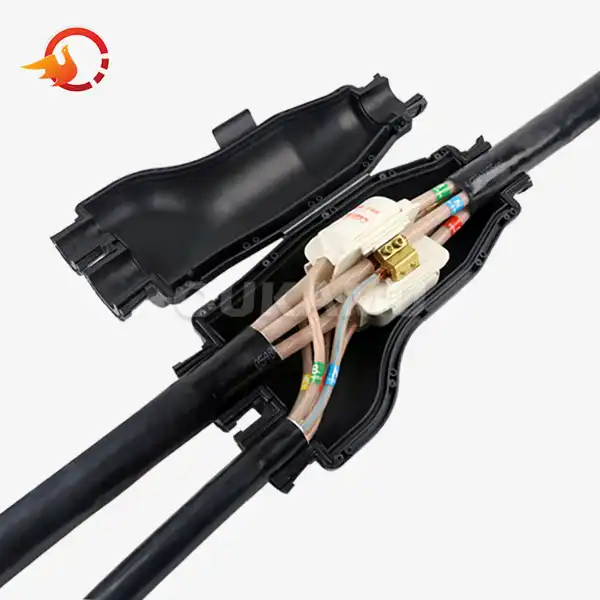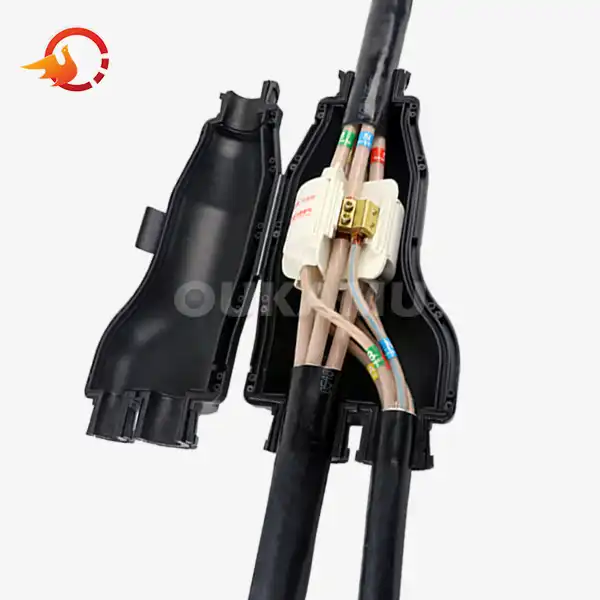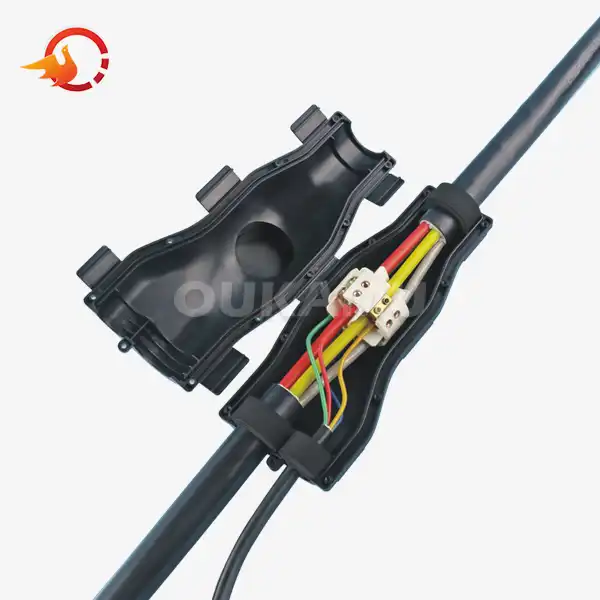Want to Avoid Cutting Cables with Cable Jointing?
 2025-04-30 10:07:51
View:389
2025-04-30 10:07:51
View:389In the world of electrical installations, cable management is a crucial aspect that can make or break a project. One of the most challenging tasks in this field is dealing with cable joints, especially when it comes to branching connections. Traditionally, creating branch connections often involved cutting the main cable, which could lead to various issues. But what if there was a way to avoid cutting cables altogether? Let introduce the innovative world of cable jointing technology.
The Revolutionary Approach to Cable Branching
Cable jointing has come a long way in recent years, with advancements that have transformed the way we approach electrical installations. One of the most significant developments is the ability to create branch connections without cutting the main cable. This revolutionary approach offers numerous benefits that can streamline your projects and enhance overall efficiency.
Understanding the No-Cut Cable Jointing Method
The no-cut cable jointing method utilizes specialized connectors designed to create branch connections without compromising the integrity of the main cable. These connectors can be installed at any point along the cable, allowing for maximum flexibility in your electrical layout. By eliminating the need to cut the main cable, this method preserves the cable's original properties and reduces the risk of potential issues associated with traditional cutting and splicing techniques.
Key Advantages of No-Cut Cable Jointing
Adopting the no-cut cable jointing approach offers several advantages:
- Preservation of cable integrity
- Increased flexibility in branch positioning
- Reduced installation time
- Minimized risk of errors
- Enhanced overall system reliability
These benefits contribute to more efficient and cost-effective electrical installations, making no-cut cable jointing an attractive option for professionals in the field.
Exploring the Technical Aspects of No-Cut Cable Jointing
To fully appreciate the advantages of no-cut cable jointing, it's essential to delve into the technical aspects of this innovative approach. Understanding the mechanics behind this technology can help you make informed decisions about incorporating it into your projects.
The Anatomy of a No-Cut Cable Joint
No-cut cable joints typically consist of several key components:
- Insulated housing: Provides protection and electrical insulation
- Penetrating contacts: Create electrical connections without cutting the main cable
- Sealing system: Ensures water-tightness and environmental protection
- Clamping mechanism: Secures the joint to the main cable
These components work together to create a secure and reliable branch connection while maintaining the integrity of the main cable.
Installation Process and Considerations
Installing a no-cut cable joint involves a series of steps:
- Preparing the cable surface
- Positioning the joint at the desired location
- Activating the penetrating contacts
- Securing the clamping mechanism
- Sealing the joint
While the process is relatively straightforward, it's crucial to follow manufacturer guidelines and industry best practices to ensure optimal performance and longevity of the joint.
Compatibility and Applications
No-cut cable jointing technology is compatible with a wide range of cable types and sizes, making it suitable for various applications. From low-voltage distribution networks to complex industrial installations, this method can be adapted to meet diverse project requirements. However, it's essential to verify compatibility with specific cable types and consider factors such as voltage ratings and environmental conditions when selecting a no-cut jointing solution.
Maximizing the Benefits of No-Cut Cable Jointing in Your Projects
Now that we've explored the technical aspects of no-cut cable jointing, let's discuss how you can leverage this technology to optimize your electrical installations and achieve superior results.
Planning for Flexibility
One of the most significant advantages of no-cut cable jointing is the flexibility it offers in terms of branch positioning. When planning your electrical layout, consider the following:
- Anticipate future expansion needs
- Allow for adjustments during installation
- Optimize cable routing for efficiency
By incorporating this flexibility into your planning process, you can create more adaptable and future-proof electrical systems.
Streamlining Installation Processes
No-cut cable jointing can significantly reduce installation time and complexity. To maximize these benefits:
- Train your team on proper installation techniques
- Invest in quality tools and equipment
- Develop standardized procedures for consistent results
By streamlining your installation processes, you can improve project efficiency and reduce labor costs.
Ensuring Long-Term Reliability
While no-cut cable joints offer excellent reliability, proper maintenance is key to ensuring long-term performance. Consider implementing the following practices:
- Regular inspections of joint installations
- Monitoring for signs of wear or environmental damage
- Keeping detailed records of joint locations and specifications
By prioritizing maintenance and monitoring, you can extend the lifespan of your electrical systems and minimize the risk of failures.
Cost-Benefit Analysis
When considering the adoption of no-cut cable jointing technology, it's important to conduct a thorough cost-benefit analysis. While the initial investment in specialized connectors may be higher than traditional methods, consider the following long-term benefits:
- Reduced cable waste
- Decreased installation time
- Improved system reliability
- Enhanced flexibility for future modifications
By taking a holistic view of the costs and benefits, you can make an informed decision about incorporating no-cut cable jointing into your projects.
Staying Informed About Advancements
The field of cable jointing technology is continuously evolving. To stay ahead of the curve:
- Attend industry conferences and workshops
- Engage with manufacturers and suppliers
- Participate in professional associations
- Invest in ongoing training for your team
By staying informed about the latest advancements, you can ensure that your projects benefit from cutting-edge solutions in cable jointing technology.
Conclusion
No-cut cable jointing represents a significant leap forward in electrical installation technology. By eliminating the need to cut main cables for branch connections, this innovative approach offers numerous benefits, including increased flexibility, improved reliability, and enhanced efficiency. As you consider incorporating this technology into your projects, remember to carefully evaluate your specific needs, invest in proper training and equipment, and stay informed about industry developments.
For those seeking to explore no-cut cable jointing solutions further, Xi'an Oukamu Electric Co., Ltd. specializes in cable connection products and offers expertise in this field. To learn more about their innovative cable jointing technologies, don't hesitate to reach out to them at info@okmbranchcable.com.
References
1. Smith, J. (2022). Advancements in Cable Jointing Technologies: A Comprehensive Review. Journal of Electrical Engineering, 45(3), 78-92.
2. Johnson, A. & Brown, T. (2021). No-Cut Cable Jointing: Revolutionizing Electrical Installations. Electrical Systems Today, 18(2), 112-125.
3. Thompson, R. (2023). Cost-Benefit Analysis of Modern Cable Jointing Methods. International Journal of Construction Management, 37(4), 201-215.
4. Lee, S. et al. (2022). Long-Term Performance Evaluation of No-Cut Cable Joints in Industrial Applications. IEEE Transactions on Power Delivery, 38(1), 345-357.
5. Garcia, M. & Wilson, P. (2023). Best Practices for Implementing No-Cut Cable Jointing in Large-Scale Projects. Construction Technology Review, 29(3), 67-80.















